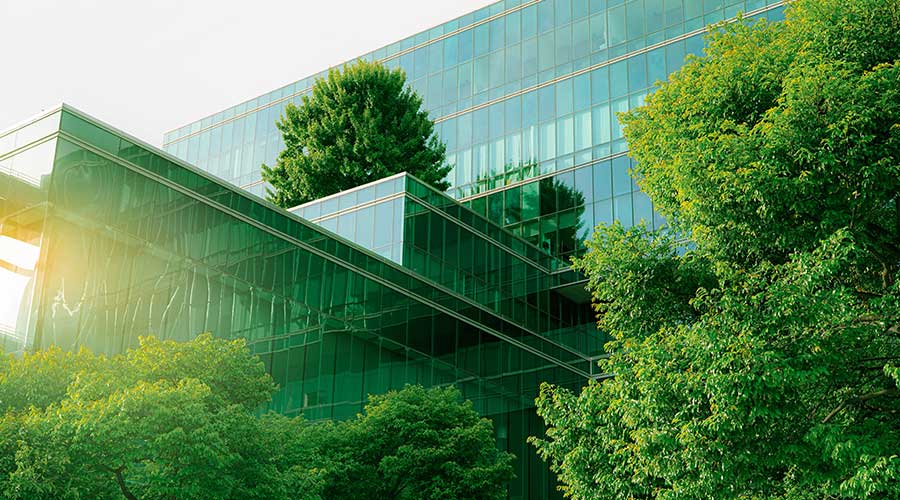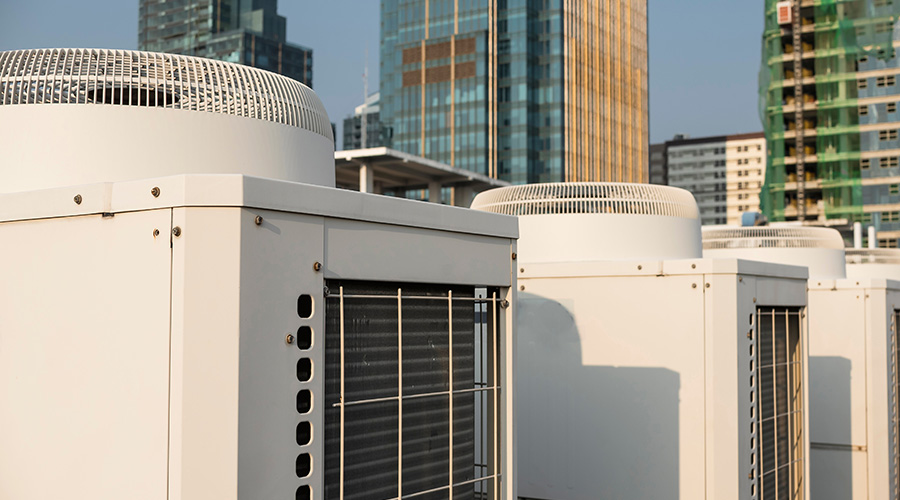HVAC Systems Common Target of Sustainability Projects
HVAC systems are targets for sustainability improvements in many facilities because of the high costs related to their installation, operation and maintenance. A properly designed and installed HVAC system can provide years of comfort for occupants, lower energy bills and improved water consumption. But a lack of proper planning can jeopardize material costs for preventive maintenance activities, energy costs and occupant comfort.
If in-house technicians and operators are especially comfortable with certain types of HVAC technology and equipment, managers can enhance productivity by asking mechanical engineers to base designs on such technology. If technicians have no experience or preference, managers might want to hire another mechanical engineering firm to provide a third-party validation of the selected approach. The second firm can help technicians prepare for such situations as running the HVAC system with 100 percent outdoor air during preoccupancy or early occupancy to flush out contaminants as a way of achieving LEED's indoor air quality requirements.
Geothermal HVAC systems are popular options for projects pursuing LEED certification. These systems can help managers effectively reduce energy costs and environmental impact, and they can provide occupant comfort if designed, installed, and operated correctly.
If a project involves a geothermal system, managers need to ask the following questions early in the planning process:
• Were soil borings taken to analyze the geological and hydrogeological data and ensure soil characteristics will enable the system to perform optimally?
• Is the spacing of the wells correct?
• Is the grout mixture correct?
• Were monitoring and testing points specified and installed to ensure system performance can be verified and trended?
If the answer to each question is yes, the geothermal system might be an effective system.
Building automation systems (BAS)
BAS have become more complex in facilities in recent years, and they have come to encompass more than just HVAC controls. Today's BAS also consist of electrical-power monitoring, lighting controls, condition-based monitoring, access control, and audio/visual system control. They enable technicians to optimize these facility systems to reduce energy use and maintenance costs.
But BAS also can come with hidden costs associated with developing information-technology security plans and the purchase of annual licensing agreements. Also, software upgrades are inevitable over the life cycle of a BAS. Other issues that can arise involve support to provide virus protection if the system is on a network as a way of ensuring hackers do not get in, especially with supervisory control and data acquisition (SCADA) systems, which provide control across multiple sites and large distances.
One important issue for technicians is the expertise to program multiple systems. In some cases, BAS are proprietary, and manufacturers in some cases can hesitate to provide training or detailed user manuals. This might delay return to service of equipment that displays cryptic failure codes.
If multiple or new BAS are part of a new sustainable building, managers must ensure technicians receive proper training and that the training is documented. It is not uncommon to forget the content of the training by the time they return to using the system.
Sustainable facilities will remain a high priority due to environmental awareness and the need to reduce energy costs. As a result, maintenance and engineering managers need to understand the role of BAS and HVAC systems in achieving these goals and be informed when working with architects, engineers and construction companies in the design and construction of such facilities. Good decisions will ensure a successful, bottom-line friendly transition to sustainable operations and maintenance.
Christopher R. Williamson, P.E., CMRP, CEM, LEED AP — cwilliamsonpe@gmail.com — works for Jacobs Engineering as a maintenance director of a federal installation in Southeastern Virginia with more than 270 buildings. He has more than 20 years experience as an electrician, electrical design engineer and maintenance manager.
Related Topics:












